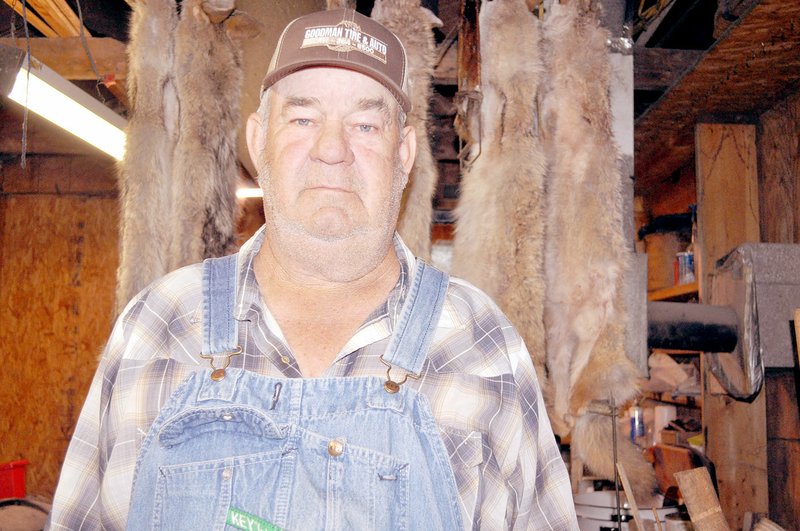Loren Garren of Goodman has been buying fur for about 52 years.
He buys all types of fur -- mink, skunk, raccoon, bobcat, otter, beaver, muskrat, badger, red and gray fox and coyotes -- from hunters and trappers.
"I scrape them and dry them and then we ship them. We ship them to Greece," he said.
He explained that 99 percent of the fur caught in the U.S. is shipped overseas to make fur coats.
"They have to have it to stay warm in places like Russia," he said.
He went to Greece when he was 21 or 22. There were people making fur coats on every corner at the time, he said. He used to make fur coats, too. He has a machine especially for making fur coats.
Currently, Garren is not shipping any fur because the fur market is unfavorable. He said whenever the U.S. dollar is strong, it makes for a bad fur market. In 1979 the top raccoon price he paid was $45, and the top coyote price he paid was $65. He declined to say what he sold them for. This year, the top coyote price is $12, he said.
"I buy fur all around," Garren said.
When he started buying fur there were seven or eight other fur buyers near his home. Now he's the only one within 100 miles.
"We started buying the 20th of November, and the 31st of January it's done," he said. "In '79 the fur buyers handled more money than any business in Missouri, and we did it in three months."
Garren got into the fur business because a neighbor of his, Ivan Walters, bought fur. At the time, Garren was running a sawmill and would go every night and help Walters with his fur business.
The challenge of the fur business is knowing how to grade the furs, Garren said.
"You throw 25 coon on this table for me to look at and I'm going to throw them in five piles," Garren said. "It's all in knowing how to grade the fur. On the coon, you've got your jumbo coon which is 32 inches and above. The next grade is 30 and above. The next is 27 and above and then 24 and above. Then you've got your mediums, then you've got your culls. Coyotes have nine grades by the fur on them, not by size."
"A coon has about three pounds of fat that have to be scraped off," he noted.
He scrapes the furs and puts them on wire stretchers to dry.
"Right now, I'm just putting them in cold storage because you can't sell them," he said. "But it'll be back as soon as this economy goes to nothing. When our American dollar gets cheap, the price will go up again."
Garren enjoys the challenge of his work.
"It's a challenge. No matter what it is, I like a challenge. I've always been that way. Knowing how to grade all this stuff when you've got eight or 10 different species and you've got to grade every species."
In the summertime, Garren does construction work.
He said his father used to catch mink during the Depression and sell it for $45 at the Longview grocery store.
"All your stores bought fur back then," he said.
"Fur is the oldest business in the U.S.," he added. "They had what they called a rendezvous every spring and all the mountain men would come and sell their furs."
General News on 01/18/2018
